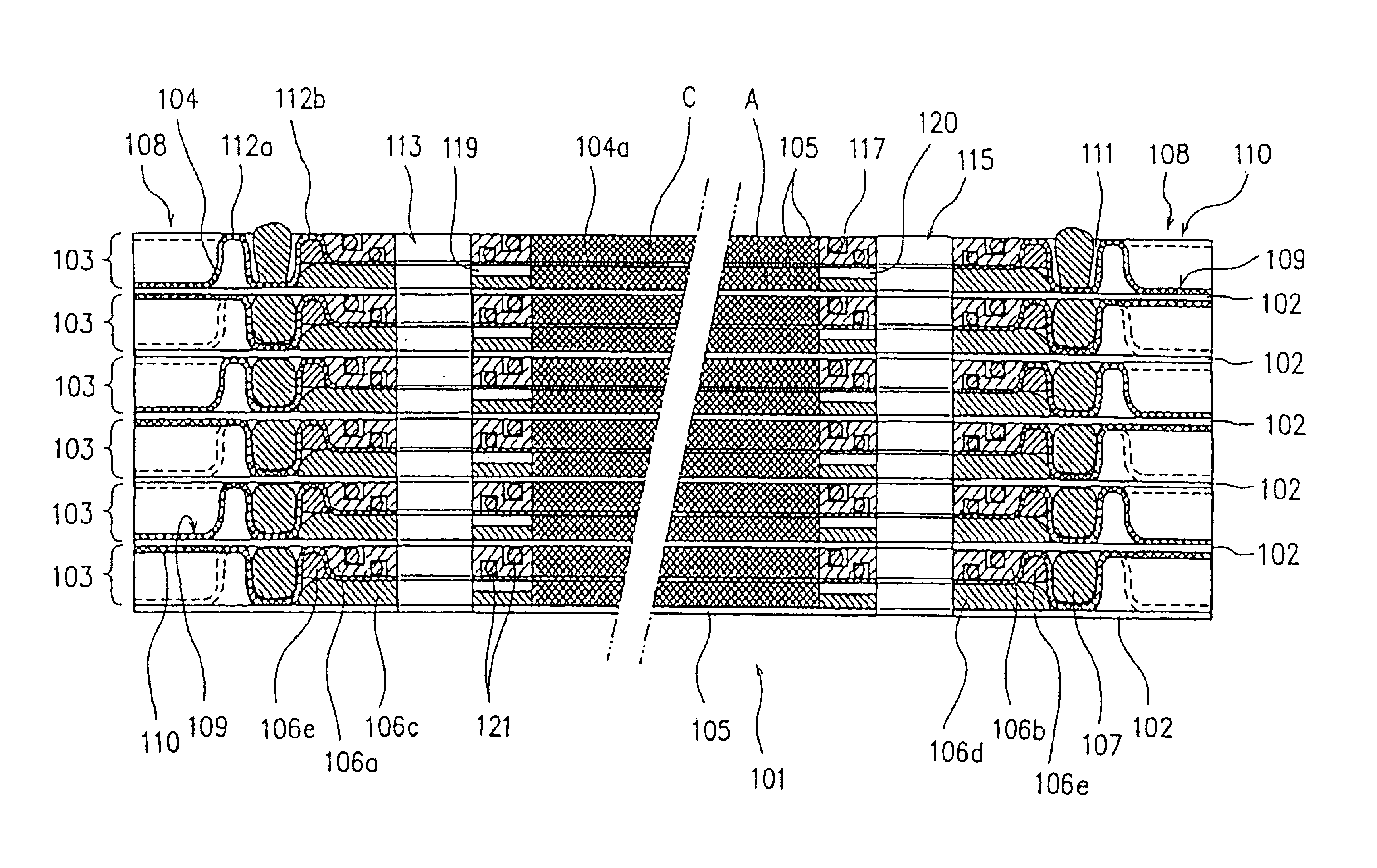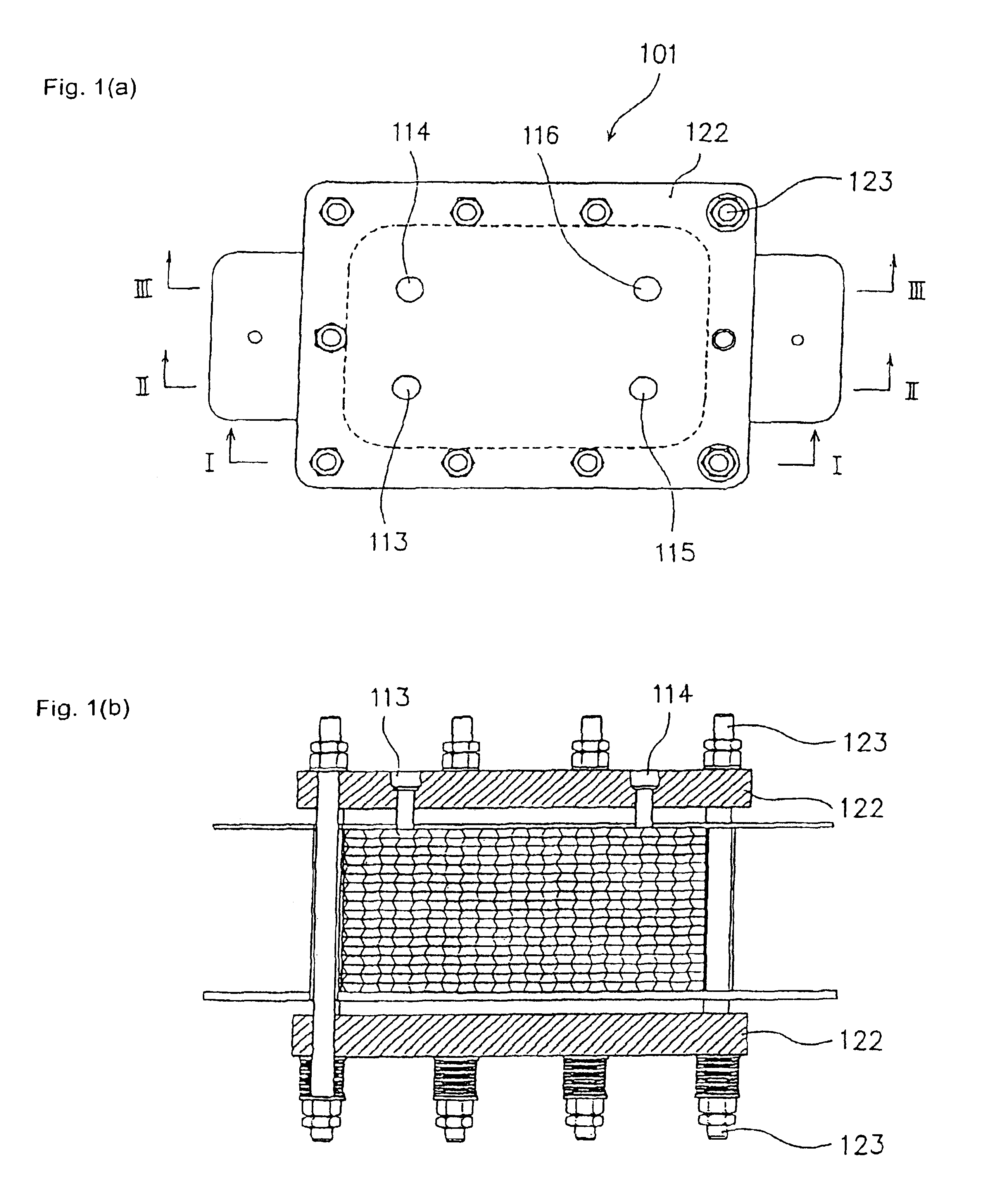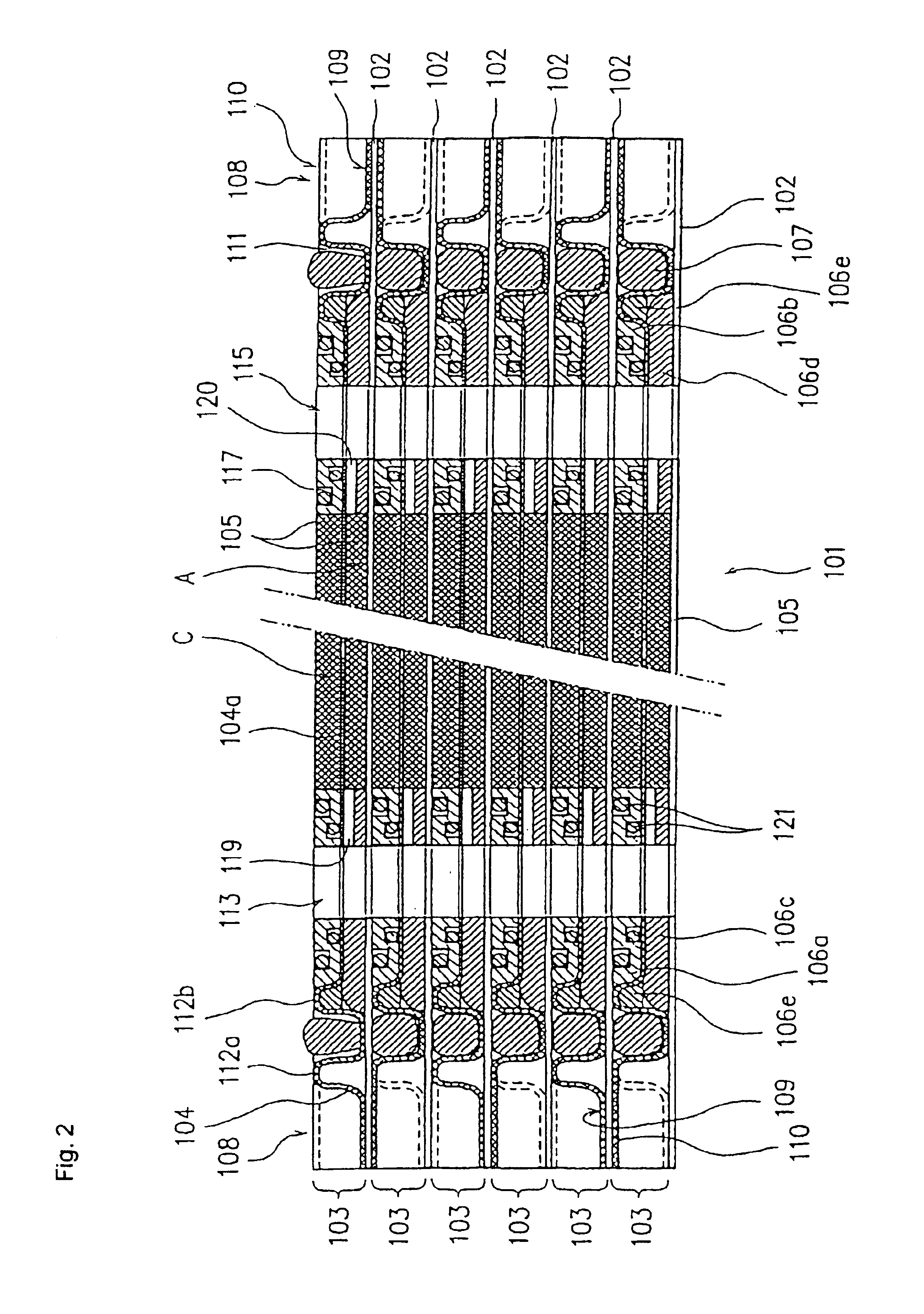Electrode plate for water electrolysis device, electrode plate unit, solid electrolyte membrane unit, and electrochemical cell
- Summary
- Abstract
- Description
- Claims
- Application Information
AI Technical Summary
Benefits of technology
Problems solved by technology
Method used
Image
Examples
embodiment 1
Preferred embodiments of the first aspect of present invention will be described with reference to the drawings.
FIG. 1(a) is a plane view illustrating one embodiment of the electrochemical cell according to the first aspect of the present invention. FIG. 1(b) is a side view with a partial cross section as viewed from line I—I in FIG. 1(a), illustrating a part (a honeycomb-like peripheral wall portion) of FIG. 1(a). FIG. 2 is a cross section of an essential portion in a cross-sectional view taken along line II—II in FIG. 1(a). FIG. 3 is a cross section illustrating an essential portion in a cross-sectional view taken along line III—III in FIG. 1(a). FIG. 4(a) is a plane view illustrating one embodiment of the electrode plate according to the first aspect of the present invention. FIGS. 4(b) and 4(c) are cross sections respectively taken along lines IV(B)—IV(B) and IV(C)—IV(C) in FIG. 4(a). FIG. 5 is a perspective view of one embodiment of the electrode plate unit prior to the assembl...
embodiment 2
Now, the electrochemical cell of one embodiment according to the second aspect of the present invention will be described with reference to the drawings.
FIG. 8 is a perspective view illustrating an essential portion of electrochemical cell 201 of this embodiment prior to the assembling thereof. FIG. 9 is a cross section taken along line IX—IX in FIG. 8, illustrating the essential portion of the electrochemical cell 201 of FIG. 8 prior to the assembling thereof FIG. 10 is a perspective view illustrating an electrode plate, a porous electric current supplier and one annular member in the electrochemical cell of FIG. 8. FIG. 11 is a perspective view illustrating an electrode plate, a porous electric current supplier and another annular member in the electrochemical cell of FIG. 8. FIG. 12 is a cross section taken along line XII—XII in FIG. 10. FIG. 13 is a perspective view illustrating an essential portion of another embodiment of the electrochemical cell prior to the assembling thereo...
embodiment 3
Now, the electrochemical cell of one embodiment according to the third and fourth aspects of the present invention will be described with reference to the drawings.
FIGS. 18 are schematic views of electrochemical cell 301 according to this embodiment, in which FIG. 18(a) is a plane view of the electrochemical cell 301, and FIG. 18(b) is a side view with a portion of FIG. 18(a) in section taken along line XVIII—XVIII in FIG. 18(a). FIG. 19 is a cross section illustrating an essential portion of the cross-sectional view taken along line XIX—XIX in FIG. 18(a). FIG. 20 is a cross section illustrating an essential portion of the cross-sectional view taken along line XX—XX in FIG. 18(a). FIG. 21 is a disassembled perspective view of an electrode plate unit constituting the electrochemical cell of this embodiment. The electrochemical cell 301 of this embodiment is formed by using the electrode plate units as illustrated in FIG. 21 and hereinafter-described solid electrolyte membranes and th...
PUM
| Property | Measurement | Unit |
|---|---|---|
| Length | aaaaa | aaaaa |
| Thickness | aaaaa | aaaaa |
| Force | aaaaa | aaaaa |
Abstract
Description
Claims
Application Information
 Login to View More
Login to View More - R&D
- Intellectual Property
- Life Sciences
- Materials
- Tech Scout
- Unparalleled Data Quality
- Higher Quality Content
- 60% Fewer Hallucinations
Browse by: Latest US Patents, China's latest patents, Technical Efficacy Thesaurus, Application Domain, Technology Topic, Popular Technical Reports.
© 2025 PatSnap. All rights reserved.Legal|Privacy policy|Modern Slavery Act Transparency Statement|Sitemap|About US| Contact US: help@patsnap.com



